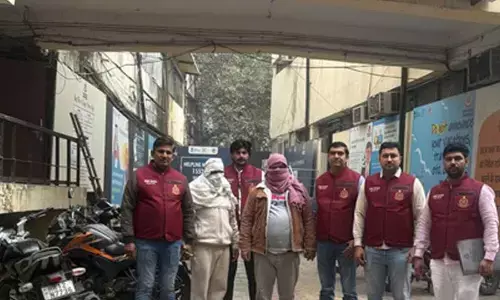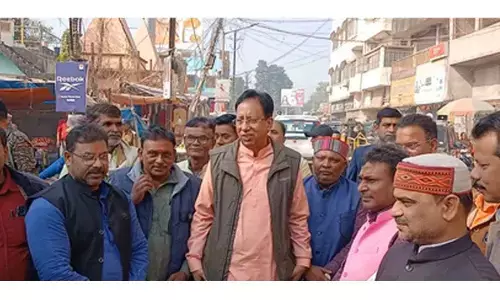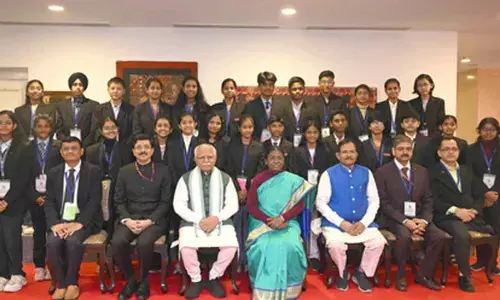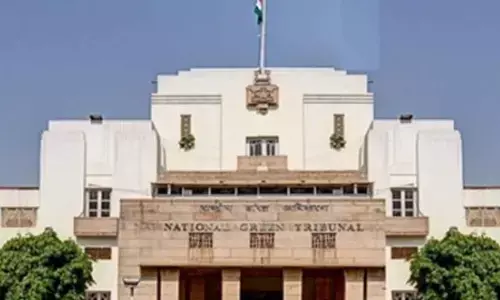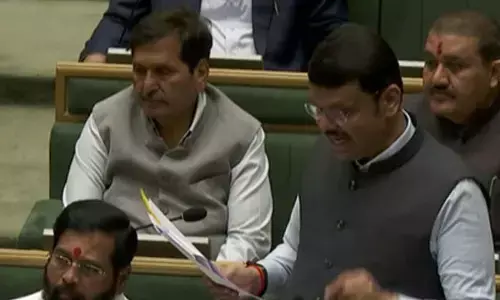This Research Note entitled – “Role of Public Relations in Resurrecting the Tourism Industry of the North Eastern States of India”, is an unique endeavor in that it provides a significant insight into the problems plaguing the last virgin and unexplored Shangri-La of India and how one can possibly overcome these problems by using Public Relations or PR as a management tool.
The Research Note highlights the vital role that PR can play in promoting tourism in India’s North East. The reader will be able to appreciate North East India’s inherent tourism potential and dwell on the reasons why the region has not been able to flourish in spite of its rich and diverse attractions. As things stand today, the North East of India is a case of “Paradise Lost”. PR has a lot to offer in resurrecting the tourism industry of North East India and bring the region at par with mainland India.
Prologue:
The North East of India is one of India’s last natural, unspoilt destinations. This region is renowned for its pristine splendor, undulating hills, valleys and myriad streams that course through it. The North East region is the most varied and at the same time the least visited part of India. Prior to independence the whole region was known as Assam Province but it was finally split into seven separate states.
In many ways the North East is quite unlike the rest of India. It is the chief tribal belt of India with a great number of tribes who speak many different languages and dialects – in Arunachal Pradesh alone over 50 distinct languages are spoken! In many ways these tribal people are similar to the hill tribes found right across the sweep of the country at the eastern end of the Himalayas, which extends from India through Myanmar and Thailand into Laos.
This region is a biodiversity hotspot and is blessed with enormous tourism assets. But the fact remains that it is unexplored and virgin. The number of tourist arrivals in the North East is low. To change this negative trend and foster the growth of tourism in the region, Public Relations or PR can play a vital role. As a management tool, PR can help promote a positive image of the destination and minimize the damage that occurs if something has gone wrong.
In the case of North East India’s tourism industry, it is a case of utter negligence, ignorance of the people regarding the aspect of tourism and coupled with it the fact that there seems to be a complete lack of confidence in the precious tourism assets that the region possesses in abundance on the part of the administration and the people in general. To be precise, there is a lack of awareness about the beneficial effects of tourism.
There is no doubt, infrastructure wise the North Eastern states lag behind as compared to mainland India, but that in itself should not be a cause for hindrance when it comes to the matter of tourism growth.
The mountainous state of Sikkim, which is an integral part of the seven-sister states of the North East has amply demonstrated over the past decade how one can overcome all odds like – remoteness, transport bottlenecks, lack of hotels and resorts etc… to carve a niche for itself in India’s burgeoning tourism map. There is no reason why the rest of the North Eastern states can’t be a success story in tourism.
What is basically required is a will to excel, the drive and the determination to succeed in spite of all odds. PR is a tool that effectively reposition the North East of India as a much preferred tourist destination. PR in tourism is oriented towards creating and maintaining an ambience whereby the traveling public at large are convinced of the advantages of visiting the concerned destination.
For PR to play an effective role in the tourism industry of the North Eastern states, a complete understanding of the background is necessary before steps can be taken to modify and solve them.
In case of North East India, the major lacunas that emerge are enumerated below –
(1) Adverse political Events.
(2) Wrong public perception of tourism.
(3) Inadequate and improper portrayal of North East as a destination.
(4) The role of media underutilized.
Having identified the grey areas, the task at hand is to adopt the right kind of PR strategies for each of the specific problems that the tourism industry of the region is faced with. Let us consider each of the problems at length and try to find out the PR solutions –
(1) Adverse Political Events:
The North East of India has always been a politically volatile region. There is law and order problems in most parts of the region and terrorism is eating into the vitals of North East India’s economy. But the situation is under control and most of the states have stable governments at the helm of affairs and the situation is fast improving.
Thus PR efforts should be aimed at disseminating information through the mass media to project a new image of North East India. Tourists certainly do not want to visit a disturbed area and most potential tourists still carry the opinion that the North East is an unsafe place to visit. This negative image of the region can be changed by incorporating PR techniques.
Tourism in fact is a vehicle for national and international understanding and this fact should be highlighted by the media, rather than merely making a big issue of the law and order problem.
A lot of hype has unnecessarily generated, especially by the media regarding North East India’s law and order problem. But the actual fact is that things are fast improving. So in order to clarify this issue what is needed is a vigorous publicity campaign by the local media focusing on the improved political situation of the region, which is to be disseminated to the target markets both within the region and elsewhere in India. This will go a long way in building up a favorable image of North East.
(2) Wrong Public Perception of Tourism:
The general public with the exception of a knowledgeable few, have not been able to perceive the fact that tourism too can be an industry, a profitable industry, an industry without smoke, having immense scope of employment generation and what is more augmenting foreign exchange earnings, which is considered to be so precious.
The economic and social benefits of tourism should be made known to the public so that they are made aware of the significance of tourism. The role of PR is vital in bringing about this awareness. Large-scale advertisement, especially outdoor advertisement should be carried out in full scale. The intelligentsia of the region should be persuaded and roped into the campaign towards generating awareness on tourism. Also, well known personalities from the world of cinema, art and music should be encouraged and persuaded to play a leading role in the awareness drive.
Efforts should be made to organize rallies, seminars, workshops and conferences with special emphasis on attracting youths in particular. Such type of PR endeavors will prove to be effective in creating the much-needed awareness and also bring about the realization in the mindset of the people about North East India’s inherent tourism potential.
(3) Inadequate and Improper Portrayal of North East as a Destination:
There has been no clear-cut policies as to how the North East of India should be portrayed as a tourist destination. Some call it a Tribal (Cultural) Destintaion while some call it a Wildlife Destination. The role of PR here would be to highlight and project the North East as a destination in a very concise, precise and specific way.
The most viable PR option would be to tag and label the North East region as an “Active Holiday or Special interest Tourist Destination” This is because of the fact that in case of Active or Special Interest Tourism what the tourists demand is not luxury and high quality products and services, but real experiences during their holidays. The demand invariably is for pleasant surroundings, usually at reasonable price, which the North East of India does have in abundance. Also, the plus point in projecting the region in this manner would be that it is not going to cost the state exchequer much. This strategy calls for less of investment and more of tourist flow.

The essential ingredient of this new form of Tourism package is the organization of recreation, which alone can enrich the Tourism experience by allowing greater integration with the destination visited and fuller involvement in social and cultural life of the holiday destination. And in case of North East India, the PR strategy that is to be advocated would be to get the tourists involved and give them the scope of greater inter-mingling with the fascinating tribal culture of the region so that they can get a feel of their exotic culture and tradition, much the same way as the Australian Tourism industry does vis-à-vis the Aborigines and New Zealand with the Maori tribe.
(4) The Role of Media Underutilized:
The North East of India is one region where commercialization has not taken place even today in any walk of life. There is also less of consumerism as compared to the other places of mainland India. Its culture too has remained uncontaminated and pristine. All this has meant that the various mass media in the form of TV, radio and the press – both print and the electronic are not all that competitive. Also, there is less of professionalism and more of emotionalism. In case of North East India’s tourism, the use of mass media to propagate and spread tourism awareness as also the inherent tourism potential of this region has not been fully explored. Whatever little use has been made has been mostly unplanned and bereft of coordination that has resulted in lack of impact as far as the general public is concerned.
In tourism the role of the mass media is predominant, for it facilitates the flow of information to the potential tourist markets. But in case of North East India, this vital mode of communication has remained grossly underutilized. There may be an occasional press release or two, which in itself is horrendously inadequate.
The PR strategy in this regard would be to use the mass media with more regularity and the information has to be more trustworthy and credible.
The use of the Internet as a medium of publicity has a special relevance in the context of today’s connected world. Rising demand of tourists and the ever-increasing supply of new tourist destinations characterize the present day situation in the world travel market. It’s a competitive world out there and the best way to make one’s presence felt is by launching North East aggressively on the World Wide Web.
Internet travel today is a reality. Chiefly because of the convenience of 24 hours a day from anywhere availability. Worldwide travel through Internet has been pegged at US $ 25 billion and it is growing phenomenally.
It is proposed to develop a web enabled Visitor Management System (VMS) for the North East India. This can be developed separately or can be integrated with the Ministry of Tourism’s portal. The main objectives of this web enabled VMS would be to make available a database of all information pertaining to the North East tourist circuit, a database of tour operators and transportation facilities, data base of accommodation and other tourist infrastructure (services and facilities) to the interested/potential tourists and information seekers, e-postcards, etc. In addition to this, database of tourists would also be captured. The VMS would also be a helpful tool to monitor the visitor management by systematic collection of data. Over the longer run, the system could take the shape of a portal through which tourists can book the lodges/ hotels as well as prebook their entry to the tourist circuit.
Innovative PR Strategies for the Promotion of Tourism in North East of India:
(1) Organizing familiarization tours for Travel Writers, Editors, Journalists and Photographers from key target markets as guests of North East India’s Tourism industry and arranging their visit for a first hand experience of the region’s incredible tourism potential would be a step in the right direction. In this regard, the respective Tourism Departments of the North Eastern states could work in close collaboration with India’s national carrier – Air India, which has at its disposal a substantial number of complimentary air passages for use by travel agents and the travel media.
(2) Instead of participating individually, all the North Eastern states should come under one umbrella and participate in the following travel trade shows –
(a) World Travel Mart, London.
(b) ITB Berlin.
(c) EIBTM, Geneva.
(d) Arabian Travel Mart, Dubai.
(e) ASTA, USA.
(3) Organize radio and television contests featuring the North East.
(4) Encourage large departmental stores, organizers of fashion shows and manufacturing companies to project the North East as a promotion showcase in their premises.
(5) North East region’s rich repertoire of crafts and loom should be given proper exposure. An exclusive “Crafts Mela” on the pattern of the Surajkund Crafts Mela could become an annual event. A celebration of the finest in handloom and handicrafts of the region has been long overdue.
(6) Rail transportation has a special fascination for foreign tourists as demonstrated by the successful Rail Tourism projects like the Palace on Wheels, the Deccan Odyssey and the Royal Rajasthan on Wheels. The Ministry of Railways may be approached and persuaded to introduce Rail Tourism in strategic tourist rich spots of North East India.
(7) Develop tourist facilities in North East India, which are in harmony with the local eco-system. For instance, alternatives to large-scale road construction in hills, like bridle paths, cycle tracks, ropeways etc…must be explored. These measures calls for less investment and the gestation period is also short, provided aggressive and planned marketing is done at the right time and at the right market.
(8) Non Governmental Organizations, especially ecological and adventure groups have an important role to play in the virgin North East of India. Their services and expertise should be availed of.
(9) The heritage palaces and monuments may be transformed into Heritage Hotels. This will generate additional revenue for the industry.
(10) Tribal Carnivals should become an annual event so that the fascinating tribal culture of the region comes alive in all its glory. These carnivals should preferably be organized in the backdrop of rural North East with some amount of commercialization thrown in for good measure.
(11) The varied cuisine of North East India should go international. This can serve as an effective marketing tool, which can generate a lot of interest in the region.
The Future Ahead:
There is no doubt the entire North East region’s tourism industry is going through a crisis, the only exception being Sikkim. There will definitely come a time when the whole of North East India will reverberate with global tourists. But how soon this turnaround comes depends entirely on the pace of progressive reforms being practically applied at the grassroots level.
The North Eastern region because of its distance from mainland India and its tough terrain has not made matters easy either. But in spite of its remoteness and other associated difficulties, the government, both at the center and the state level has already started its policy of extending priority to the all round development of the region. All these augurs well for North East India’s tourism industry.
The most significant development in the context of North East India’s tourism industry is that Guwahati – the gateway city of North East and the capital of Assam has now a fully operational International Airport. This was a long felt need of the region. What this airport would do is link up the North Eastern region of India and make it easily accessible with the whole of South Asia and countries like Thailand, Singapore, Philippines, Malaysia and also the Pacific rim countries would be in a position to network with the North East of India.
Since the North East of India is considered to be a very sensitive and strategic region, in the past entry to this part of India was never easy. There were a lot of travel formalities to be completed before the tourists could gain entry into the region. The “Restricted Area Permit” had to be obtained, which in itself used to be a long drawn process. But now with the Government of India relaxing the formalities has made entry from both within India and abroad much easier. The demands to visit the region on the part of the discerning international tourists has shown an upward trend. This indeed augurs well for the region’s tourism industry and already there is a sense of optimism.
The opinions expressed in this article are those of the author and do not necessarily reflect the views of our organisation.

.jpg)








